The Anti-Racist Journey of a Secondary School in Manchester
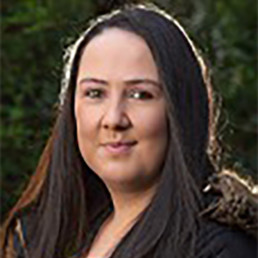
Written by Laura Morris
Laura Morris (@MissMorrisManc) is head of RS and Citizenship at a secondary school in Gorton, Manchester, with additional whole school responsibilities for SMSC and anti-discrimination. She has been teaching for 15 years. Her website is MissMorrisManc.co.uk.
Before the Black Lives Matter mobilisation of 2020, and all that followed, staff at the school I work at in Gorton, Manchester, would largely have felt positively about the work we were doing to celebrate our students, myself included. We went all out for Black History Month every year with relevant lessons across departments and external visitors invited in (as showcased in this video from October 2019), we had very few complaints of racist incidents from the students, and some work had been undertaken to decolonise the curriculum, particularly in subjects like RS, Citizenship, History and Geography. We could pat ourselves on the back for a job well done!
With all the work we’ve done since, and the huge changes that have been made, I now feel embarrassed to reflect back to pre-2020 when I thought we were already doing enough for our students. We weren’t.
Before we broke up for summer this year, I wrote a report detailing what we’ve done so far with the hope it could give ideas to other teachers and save them some time if they are starting from scratch. It’s been a process of trial and error and, while we’re still far from perfect and keen to collaborate with other schools to help us further improve, I am confident that we are now having a much more positive impact on our students in making them feel seen, appreciated, safe and loved.
In this blog I will summarise the most important parts from the report for people who are keen to improve the anti-racist practice in their school.
Named members of staff
Towards the end of the 2020-21 academic year, my colleague Ben Wilson was given a TLR to focus on anti-discrimination work in the academy and I was made associate assistant head with the same priority, which I realise puts us in a very fortunate position. Our head teacher included this anti-racist work as an objective in the school improvement plan and believed it was necessary to appoint people in posts to achieve our goals. I can’t stress enough how important it is for all schools to be willing to give time and money to staff doing this work and can only hope the example from our school will help other teachers feel confident to take similar proposals to their head teachers.
Staff groups
If I had to single out the most impactful elements of our process, it would be the staff and student groups. So many changes have been made but it’s hard to think of anything we’ve done that didn’t first come from conversations held in these spaces.
I realise how lucky I am to work alongside enough people who recognise the institutional racism present in education and were prepared to give up their time to do something about it, and that’s how the anti-racist working group (ARWG) was formed in September 2020.
We created sub-groups, each taking responsibility for a different area that we decided needed to improve, like the behaviour system and reporting incidents of discrimination, student voice, the curriculum, and staff CPD.
If you don’t feel as though you’ve got enough members of staff with the interest or time capacity to take on this work, there is no need to panic, as it is the students who have guided so much of what we’ve achieved. They are the experts and are invaluable to bringing about change.
Student voice
Student meetings started in early May 2020 during lockdown on Zoom with organisations like Kids of Colour (who still lead student meetings half-termly) and The Black Curriculum, and continued informally during lunch times when we returned to school the following academic year. It became clear how important it was for our young people to be given time to talk about their experiences of racism both in and outside of school.
At the start of the 2021-22 academic year we interviewed Year 11 students for anti-discrimination ambassador roles. They decide the agenda for the separate fortnightly KS3 and KS4 meetings, which are held during the 30-minute form time slot, lead the discussion, and, while I am in the room (to take back any pressing concerns to the ARWG), the ambassadors take responsibility for the meetings. Students discuss their personal experiences outside of school, what they believe needs to change in school, and anything that is going on in wider society that they would like to talk about. Any students who don’t feel comfortable reporting incidents of discrimination to teachers can go to the ambassadors who then feed back the details to Ben or me.
One of last year’s anti-discrimination student ambassadors said: “I feel like having this space for students is really important because we come together as a community to discuss issues that really matter to us and we think of ways to resolve it and deal with it.”
We have an annual anonymous anti-racist student survey, to help us identify issues that may be affecting students who don’t attend the meetings, and the student groups have delivered assemblies in response to the feedback to educate all students on discriminatory behaviour they might knowingly or unknowingly be perpetuating.
Towards the end of the 2020-21 academic year, Year 11 students wrote down examples of times that staff had said or done racially or culturally insensitive or offensive things. I recorded them reading out the statement of another student, to ensure anonymity, and played the video to staff during a CPD session.
Hearing the accounts woke up so many members of staff to the experience of the students, which has meant that all the work that has followed, that has resulted in an extra time commitment for pretty much everyone working in the academy, has been easier to achieve. There’s little room to question or complain about the need for change when you have student testimony to support the cause.
Discriminatory incidents
Discussion in the student groups highlighted the need for us to better deal with incidents of discrimination between students. Racism was very rarely reported but feedback from the student groups revealed this was down to the students feeling as though nothing would happen as a consequence, either because they had reported something in the past and hadn’t heard how or if it had been dealt with, or their belief that it wasn’t a priority for staff.
Ben created a reporting system (that you can read about in more detail in the report), which was trialled at the end of the 2020-21 academic year and put in place the following year, which has currently significantly increased the workload of staff who deal with behaviour incidents. But it has also meant we are in a much stronger position to educate and sanction students involved in discriminatory behaviour, as well as validate the feelings of, and bring resolution to, the victims. Different forms of microaggressions are the most commonly reported incident and students have responded incredibly well to the educational sessions they attend with Ben or me as a consequence. Victims are given the opportunity for a restorative conversation, once pre-restorative work has taken place with both students, and they almost always choose to take up this offer in the process.
The number of repeat offenders is minimal, if not close to non-existent. But the number of reported incidents has increased. Students now have the confidence in the school to respond appropriately to accusations of discrimination.
As one of last year’s ambassadors put it: “when I look back at when I was in Year 9, if someone said something racist to me I would just go home and cry. But now I would feel empowered enough to report it and I hope younger students feel that way too.”
Curriculum changes
All subject leaders completed The Key’s anti-racism curriculum review document, which identified areas for improvement for departments already on the journey of decolonising their curriculum and served as a fantastic starting point for teachers who didn’t know where to begin.
After being given department time to plan and create new resources, we’ve had a carousel format for whole school CPD sessions to share these across departments. Most departments now have a member of staff with an objective in their appraisal relating to diversifying their curriculum. During the carousel CPD we have a ‘speed dating’ format where staff spend a few minutes listening to the changes each department has made, and having discussions on the impact and any possible cross-curricular links, before moving on to the next department.
We recognised the need to better signpost these changes to students. Bennie Kara delivered a bespoke CPD session for our staff last December where she suggested posters to be placed around school. Now every classroom has a subject specific poster highlighting content relating to race (as well as sexuality, gender and religion) in our curriculums. Before breaking up for summer, subject specific PowerPoints were shown to all students too so they knew what to expect in the year ahead. Examples of what we teach can be found on our school website.
For more details on the processes above as well as other initiatives we’ve implemented, check out the report in full. Feel free to reach out to me on Twitter too!
Building a Multi-Faith Space
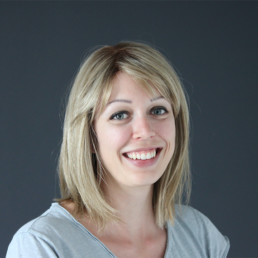
Written by Hollie Panther
DEI Lead, Mental Health First Aider, secondary Science & Psychology teacher and Teach First Ambassador.
Experiences of, and learnings from, establishing a space for prayer and celebration of religious diversity in a secondary school.
The last school I worked in had a majority non-religious student population, but a diverse spread of religions among those who did follow a faith; many religions had just one follower within the student body. A parent of one such student had mentioned that they were uncomfortable being open about their faith due to the amount of discrimination they’d received in the past. As D&I Lead, a large part of my strategy to improve religious inclusion in the school was to open a Multi-Faith Space. When I started, there was no designated place to pray; my previous school did have a prayer room, but it was hidden away and only students or staff who asked about it were encouraged to use it. I wanted to create a space that people from all religions could use, so that it would encourage some sense of community, which I thought those who were the solo followers of their faith within the school might’ve been lacking. I also wanted it to be a place of celebration and curiosity, so that any student could learn about diverse faiths if they wanted to. The space was initially opened as a work-in-progress during Ramadan, to give Muslim students a place to pray and be away from food if they needed it. During this time I also designated a toilet block for Wudu, the practice of washing before prayer, and delivered whole school talks educating students about Ramadan and how to support students who were fasting. Feedback from this was unsolicited and overwhelmingly positive — parents of Muslim pupils wrote in to the school to congratulate and give thanks for the ‘exemplary inclusion effort for Ramadan’; my wish is for this approach to Ramadan to become the norm in all schools, so all pupils can celebrate the diversity of religious practices alongside one another.
Working alongside the Multi-Faith Space was the Religion & Spirituality Society, which I established as a student-led club who met at lunchtime to explore and learn about various religions. The leaders of the society planned activities and presentations for the group, and brought in occasional themed snacks too — I’m hoping the society will meet in the Multi-Faith Space going forwards, to ensure they are surrounded by diverse religions, with the opportunity to learn about them being easily accessible.
The Multi-Faith Space is two small rooms off of the Library, where I have put up shelves on each wall and designated each of the six walls to a major world religion (Christianity, Islam, Judaism, Sikhism, Hinduism, Buddhism). I reached out to religious leaders in the community to see if they would be happy to donate a copy of their religion’s text or any artefacts that could go on the shelves. This took the form of finding email addresses of local Mosques, Churches, Gurdwaras etc, or filling in contact forms on their website, and Googling ‘free copy Jewish, Hindu, Buddhist etc text’, and making sure in my message I invited them to send my request on to anyone else they thought might be able to help out. As a result of this I had an incredible array of items gifted to the Multi-Faith Space by several local religious groups, and had an insightful and useful meeting with the representative of Judaism from the West Sussex SACRE (every county council have representatives of world religions, who are keen to come into schools to deliver lessons / assemblies etc on their religion, I’m hoping the next D&I Lead and teachers of RE will be able to make use of this otherwise untapped source after my introductions — none of the RE teachers in the school had heard of them). Several sources of items and books posted them to me or dropped them in to the school, but I also visited several organisations to collect their donations, which I really enjoyed, as it took me to places I wouldn’t have ordinarily visited within my local community.
I organised a Grand Opening for the Multi-Faith Space to which I invited all the local contributors, as well as staff and religious students. The student leader of Religion & Spirituality Society was invited to cut the ribbon; it was a great opportunity for me to connect up school staff and the pupils who will be running the Religion & Spirituality Society next year with community religious leaders (over donuts and cookies), so that they are able to lean on them for support with the society and also with RE teaching as the school grows. One community attendee at the Grand Opening came from the Baháʼís, a religion I admittedly hadn’t heard of when they initially made contact, but which I learnt much about through talking to this local follower at the event. They also donated several items and books to the Multi-Faith Space, and though they didn’t have a designated wall and shelves, I set up a table in the space to display their information, and was really glad to be representing a greater diversity of faiths than I had originally planned for.
I had a student volunteering with me for their Duke of Edinburgh’s Bronze award, who helped me plan the space and also worked in the Design Technology (DT) room on a signpost to go outside of the Multi-Faith Space, which featured laser-cut arrows, each one with a different place of worship on it — ‘Hindu Mandir’, ‘Sikh Gurdwara’ etc. Unfortunately, because the student could only work on this under supervision by the DT teacher, due to technology issues and absence, the sign was not finished in time for the Grand Opening — I look forward to seeing photos of it in pride of place when it’s completed in the Autumn term.
My advice to anyone thinking about building such a space would be to absolutely go for it — the only spend was on the shelves and snacks for the Grand Opening, as well a couple of items to represent religions who didn’t get back to me to contribute anything. The rest was furniture that was already in the school, and the items and books gifted by the religious community were invaluable — so it’s doable on a tiny budget, I would just encourage anyone wanting to build one to start early, and get your message with the call for help / donations really clear and send it to as many people as possible, ideally alongside an invite to a Grand Opening — and then chase them up if they haven’t replied; I got the impression that everyone wanted to help, but that sometimes there are multiple people within a place of worship who read the emails, so they may not get picked up the first time around.
On the whole, I really enjoyed building the Multi-Faith Space and I’m really proud of what I achieved with this — the Grand Opening was on my penultimate day working at the school, so it really feels like a legacy I’m leaving behind; a tangible asset to the school community that will continue my work without me.
Education DEI Calendar 2022-23

Written by DiverseEd
Diverse Educators started as a grassroots network in 2018 to create a space for a coherent and cohesive conversation about DEI. We have evolved into a training provider and event organiser for all things DEI.
We know that it is really hard to keep on top of all of the awareness and celebration days, weeks and months to include in the school calendar!
We also appreciate that it is equally difficult to know when to schedule/ host a DEI event without causing an unintentional clash or how to find out what DEI events are happening.
So we are proposing a work-in-progress solution which will evolve and grow as others contribute to it to co-create a comprehensive resource to make all of our lives a little bit easier…
The Education DEI Calendar 2022-23 is a draft – it is not perfect, it is not complete and it is in no way trying to exclude any key dates! Please bear that in mind as you review it and share solutions instead of problems if there are things you would like to suggest we add/ change as it evolves.
At the moment it captures lots, but not yet all, of the key dates from the following free resources which we signpost to people in our network:
- The CIPD Inclusion Calendar 2022
- The Dual Frequency Diversity, Equality and Inclusion Calendar 2022
- The Inclusive Employers’ Diversity and Inclusion Calendar
- The James Wants to Know You Diversity Calendar
- The NAHT Equality, Diversity and Inclusion Calendar 2022
- The NHS Diversity, Equality and Inclusion Events Calendar 2022
We have collapsed lots of these dates into a spreadsheet to make it more educator-friendly – so that you can filter by month, week, day and date to see what is going on. (You could also copy and paste it alongside your school calendar or your school’s assemblies schedule to cross-reference where themes are being explored).
We have not yet added all of the religious and cultural days as this will probably need another column as there are so many dates to be aware of. This will be the next layer of detail so keep checking back as it evolves over the summer break ready for the new academic year and start of term.
Note that when there is more than one theme on any given day/ week/ month we have sorted them by A-Z so that there is no perceived hierarchy. Also that when an awareness week is split across two weeks we have shifted it to the week it falls in the most.
Remember that you always have creative license to make these dates work for you, your school and your community – for example, some themes might need an awareness assembly before it falls on the calendar, others may require a celebration event following a key date. Consider how to streamline how many of the dates you want to mark so that it does not create overwhelm for staff nor students.
We have highlighted the weekends for all of the grassroot networks who host DEI events – the idea is that organisations in our network will be able to edit/ add dates of events with contact details and links to register/ book a ticket.
Do help us grow and improve the Education DEI Calendar 2022-23 by making suggestions and giving us feedback here. We hope you find draft 1 helpful to get you started!
#Miscourage: The Worst Week of My Life
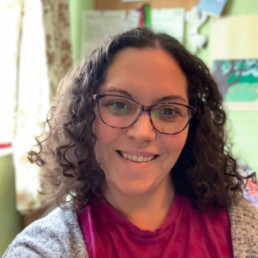
Written by Amy Keenan
Having been an English teacher since 2006 across a range of different settings, I have seen a lot, done a lot and struggled a lot. Whilst holding departmental and whole school TLRs, I have learnt a lot about teaching, realised I've still got a lot more I could learn and realised the importance of looking after ourselves and our teams.
Firstly I want to make it clear that I’m not writing this for sympathy but because I’m still in need of talking / thinking this through and the reality is that this is quite a lonely issue when it really shouldn’t be. So, I’m gladly joining Tommy’s #MisCOURAGE campaign.
In August I got the best news ever: a little + in the window of a Clear Blue pee stick. It was something I’d been waiting to see for 10 months and worried that I may never see when it looked like there may be a problem with my ovulation.
However on 11th September a scan saw my pregnancy was only 4 weeks along when it should have been around 10.
Words cannot explain the emotions that follow such an emotionless phrase: “it’s a non-viable pregnancy”
Holding back my tears caused me physical pain. Once at home I had to go through the trauma of calling another hospital, one with an early pregnancy unit, to discuss my options.
My surgical miscarriage was scheduled for the 16th September (sadly the day before my birthday) and the nurses were so kind. However with only a handful of people who knew I felt so alone.
And to be honest, I still do.
Miscarriage, whether natural or medically induced, seems like our version of Voldemort. Everyone’s scared to say its name out loud. Maybe we’re scared of breaking down? Or making people uncomfortable? Or inviting it into our or our friends’ lives? Who knows, but it leaves those who go through it in pain and without many people to talk to.
I’m lucky to have my husband, who was exactly what I needed when I was in hospital. But I’m scared to talk to him now. I know it’s irrational, but I do feel guilty. Not because I did anything wrong but because it was my body that didn’t do what it was supposed to. And, worse still, I’m terrified that it may happen again or that the problems they were looking into before the pregnancy (and never found an answer to) will turn out to be something real, something serious, something that means it’s unlikely that I’ll have a healthy pregnancy.
I don’t wish to sound melodramatic, and maybe that’s another reason I’m finding it easier to talk to anonymous internet people. The problem is, as well, that I ‘stiff upper lipped’ it when I went back to work so now feel that I can’t break down and let out what’s inside when one of the few who knows asks if I’m OK.
In these past months I’ve found that the pain remains and sneaks up on me. I’ve shed a few tears while I’ve been driving to or from work and I’ve found myself withdrawing from life recently. This past fortnight I’ve forced myself to go out and although I enjoy myself once I’m with my friends the desire to curl up under my duvet and sleep is very strong. This has also had an impact on my job; once I returned from my week off I had a lot to catch up on, but I didn’t feel the same enthusiasm and passion as I normally did. I struggled to stay focussed during my frees and have found it hard to motivate myself to work once I arrived home. All this has kept me with my head barely above water these past few months. Luckily, once I started drafting this blog post last week I started to feel a bit better and I felt some of my passion return and with it my motivation; I still have an enormous pile of marking to catch up with, but I’m not hiding from it any more. I don’t want to hide from it any more.
And I don’t want to hide from what happened. I want to confront it head on:
I had a miscarriage and I still feel pangs of guilt & sadness about what my body took away from me and my husband.
I am worried that it will happen again.
But I will not live in fear of it happening again.
I will have a family, I just don’t know when yet and that’s OK.
Parents overwhelmingly support LGBT+ inclusive education and students want it, so how do we get started?
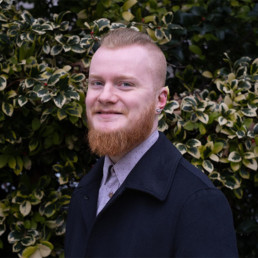
Written by Rob Ward
Education Programmes Manager at Just Like Us
LGBT+ inclusive education has a history of being intensely scrutinised. Social media continues to bubble away, highlighting the dynamic landscape of support for, and respect of, LGBT+ people, meanwhile educators grapple with exactly what is classed as “timely” and “age-appropriate” for LGBT+ inclusive education within RSE.
Without skipping a beat, Ofsted is fulfilling its commitment to reviewing schools for their adherence to RSE guidance – guidance which became compulsory for schools in the midst of a period of upheaval in education and wider society not seen in living memory. Educators currently find themselves juggling advice from exam boards, a student body still reeling from isolation and disruption over the last two years, and ever-growing working hours to try to bridge the gap between the two. The backdrop that LGBT+ education finds itself in today could not be more crowded, with competing stakeholders from across society offering opinions on what should be happening in our schools.
Independent research published by Just Like Us on the most varied stakeholder of them all – children’s parents – has found that the overwhelming majority is supportive towards LGBT+ inclusive education. 82% of UK parents believe that it is ‘important’ for their children to learn about LGBT+ families, such as some pupils having gay parents. However, parents also reported a lack of resources to help with this – only 34% said they felt their school was adequately resourced to help educate their children and 33% have never spoken to their child about what LGBT+ means.
In the context of increased commentary and scrutiny on LGBT+ in education, these findings highlight the importance parents place on fully inclusive education for their own children. It’s a clear signal that parents are looking for teachers to take the lead and support them in providing high quality, fully LGBT+ inclusive education for their children, as they do across other areas of the curriculum. Students report the same; previous research has highlighted how the majority of young people are looking for LGBT+ inclusive RSE education, alongside subject curriculums that embed LGBT+ inclusion throughout (79% and 67% respectively). More than half of LGBT+ pupils are looking for support from their teachers to set up inclusive initiatives like Pride Groups for LGBT+ and ally pupils to help a wider network of their peers.
When taken together, these findings should represent a green light to educators to push for inclusive education. Parents are expecting it, students are asking for it, and all the while Ofsted is continuing to check for it. So how can teachers go about it?
Engaging in visibility days, LGBT+ History Month and School Diversity Week throughout the year can be powerful, visual ways that a school can demonstrate its commitment to building safe, inclusive environments for all its students. Sue Sanders’ work on usualising vs actualising LGBT+ topics within subject curricula also offers a strong framework to review and edit schemes of work to embed a variety of stories and viewpoints within existing topics across the school.
Beyond engaging in visibility days and reviewing who and what gets taught about, setting up LGBT+ and ally groups is the best way to make long-term change. We help schools to set up and run these on Just Like Us’ Pride Groups programme, by providing staff and Student Leader training as well as ready-to-go resources for just £99 a year. Pride Groups also help to incorporate inclusion and celebration of LGBT+ lives within a school’s ethos, and provide a platform for student voice to help guide further development of inclusivity within schools long term.
While the backdrop for LGBT+ inclusion may be loud, dissonant and confusing right now, educators are used to cutting through this. Parents want their children to be educated about LGBT+ lives, while students continue to show a desire to learn about them. More than ever, teachers should feel empowered to explore how they can incorporate LGBT+ stories within their teaching and dispel misinformation, putting their fine-tuned teaching practice and pedagogy to use to meet their students where they are, helping them along their journey to exploring and celebrating the LGBT+ lives and history around them.
Making the Judgement Call
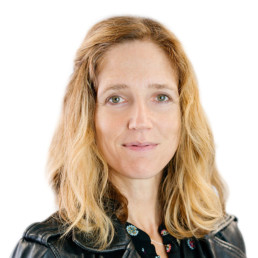
Written by Ellie Garraway
Chief Executive of Grit Breakthrough Programmes, a youth charity that delivers personal development and coaching programmes in schools, colleges and universities across the UK.
Recently I’ve been reading through the bank of case studies we’ve collected here at Grit. In these extraordinarily trying times, they really are a thread of hope and I’ve just loved reading through them. As I’ve absorbed them I’ve noticed a theme emerging: the critical role a place of non-judgement can play.
Time and again this has shown up. Young people talk about the impact made by a coach who doesn’t judge but simply listens and challenges, who is not a parent or a teacher, comes with no agenda or ulterior motive of their own.
“There was one young man who was always getting in trouble at school, getting kicked out of lessons and fighting with other students. But what made him really angry was that he felt he was being labelled ‘bad.’ What made the difference, what cut through with him was someone, other than a teacher or his Mum, who ’said it straight.’”
Judgement, judgement everywhere
We all remember the paralysing fear of being judged: being afraid of what the bullies might say, about looking stupid if we put a hand up in class and got it wrong. But when judgement is solely based on how you look, how you sound or where you come from, it can have you denying your own identity. A black student recently told us how “I’d always be finding ways to make my opinions more palatable. For instance, in a seminar about Malcolm X, I softened my support for him for fear of being labelled ‘radical,’ a term which does not fit who I am.”
This has all had me reflecting on the preciousness of the times and spaces that are free from judgement. And is it really that rare?
So I started looking for the spaces where judgement didn’t dominate. I was hard pushed to find any. If you’re curious about this, just notice for 24 hours how many conversations you have each day in which you are talking about how things should or shouldn’t be, what agree or disagree with: judgement is everywhere. It’s in the ether, it’s the air. Social media largely exists to produce and consume it. To be human means, it seems, is to be entirely inhabited by judgement.
I guess this shouldn’t be a surprise. The way our society operates is predicated on judgement. We are brought up within an education system designed to measure us, grade and sort us, judge us by some external criteria that tell us what we’re good at, and what we aren’t. These norms tell us who we are and where our place should be while our institutions are structured to divide and protect around race, gender, class… From then on it is natural that we look for experiences and opinions that confirm our biases, affirm the judgments we have inherited.
Judgement in the way
Of course, judgement IS important. There are those of us who have careers that depend on making the right judgement call: doctors save lives, pilots land planes, sports managers pick the teams. Judgement is essential. Without it we can’t we decide how and when to act.
But are there times and spaces where judgement really gets in the way. When young people we know are finding their way we can be very keen to agree or disagree with their judgment, keen to deliver our judgement, or even keen to try really hard not to give a judgement.
The more I listened out for it, the more I realised that – just as these Grit participants had reported – judgement-free space is a rare and precious thing. So, if that is the case, then, how do we create a space of non-judgement? And what does it really mean to be non-judgmental?
What it takes
The first step is to recognise when we are being judgmental. Judgement is a reflex, an impulse so automatic that often we don’t even notice we are making it. It dominates: we have a ‘should’ and ‘shouldn’t’ about everything. Our responses, our actions are determined by our judgements unless we actively and deliberately seek out another way of responding.
Those of us familiar with coaching (either formally or informally) are used to supporting another person to achieve their goals. As a coach our role is about questioning, inquiring, testing – all in the service of the ‘coachee’ reaching their goals. It is not about our judgement, our opinion. It is not about what we think of the other person. It is all about creating the conditions, providing the space for the coachee to work through what needs to happen for them to achieve their goals.
And here’s the rub. We still agree, disagree, compare, want to fix, can’t wait to speak, are frustrated: we still judge. But, each time we notice it, our job is to put it aside and come back to our commitment to the goals of the person we are coaching.
This does not come naturally. It takes effort, practice and commitment. But we know it can be transformational.
Judgement serving
Of course, even in the coaching scenario we have to make judgements: we judge the boundaries of the relationship, the most useful questions to ask, the right time to wind up a session, when to move from ideas to action. But the difference is that we are using our judgement to serve the goals of the person we are coaching. And that is distinctly different from our judgement ‘using’ us.
This is liberating for the young person being coached: “It was such a huge release to be speaking thoughts and ideas that I’d been suppressing since school – sharing my story with no filter; genuinely empowered to be completely honest with myself and with everyone else in the room.”
And it is liberating for the coach: “To achieve what I want to achieve with students means that I have to let go. The choice about whether to behave in school is theirs and theirs alone.”
So, we can never be entirely without judgement (aside from in certain meditative states) but what we can do is build muscle memory that enables us to create spaces where judgement doesn’t determine our responses and our actions. We are calling on our judgement rather than BEING it.
We live in divisive times: everywhere young people look they see and hear stark and polarising judgements about gender and race, about who they should be and how they should behave. So how do we look after our own (and their) sense of humanity, of hope, of progress? How do we free them to truly explore who they really are?
Perhaps it’s in the small things. Actively creating judgement free spaces for those young people in and around our lives might just be the best gift you have to give. And, if you’re anything like me, you’ll discover that when you offer this, you don’t only liberate them, you give yourself a much needed break from those judgement-dominated conversations that swirl around us everyday.
Why We Need Anti-Sexist Language Resources in the Curriculum
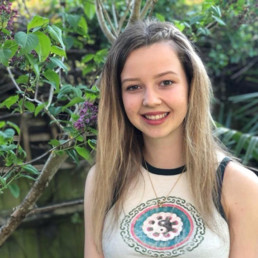
Written by Sophie Frankpitt
Applied Linguistics undergraduate at the University of Warwick
A culture of sexual- and gender-based violence is being enacted through our words. But we still aren’t listening – and we still aren’t talking about language.
In June 2021, the government published a review of sexual abuse in schools and colleges. It showed us that sexual- and gender-based violence is rife, and that girls are disproportionately affected. The figures were stark, but for many of us that did not come as a surprise. What came as a surprise for me is that – as far as I’m aware – no-one pointed out that most of the sexual harassment was perpetrated through language.
I’m a Linguistics undergraduate, which means that studying language is what I do. Ever since the review was published, I’ve spent days rereading it, trying to work out how to articulately say that this survey shows us how important language is. It is through working with Our Streets Now for the last few months that I have been able to work out how to say what I think needs to be said.
The review stated that 92% of girls thought sexist-name calling happens a lot at school, and 80% thought that unwanted sexual comments are a regular occurrence. Other recent studies have also shown us that sexual- and gender-based violence are often perpetrated through language. For example, in 2018, Plan International reported that 38% of girls experience verbal harassment at least once a month. This is likely to be higher amongst women of colour and those in the LGBT+ community. In the National Education Union’s (2019) study, over a quarter of teachers hear sexist language daily at school. On Our Streets Now media, the campaign against Public Sexual Harassment, you can see various testimonies that explain the effects of verbal (and other) harassment.
You might say that sexist language is the least of our problems, and that we should be dealing with things like physical harassment. But sexist language establishes a conducive environment for sexist behaviour. It enacts and builds a culture in which sexual- and gender-based violence is standard. This means that, by using and hearing sexist language, a culture of sexual- and gender-based violence is normalised. There are many, many studies that have shown the detrimental effects of sexist language on wellbeing. And this is why language is important.
Part of the reason language is powerful is because it shapes our worlds often without us even realising. Within our words lie our values, our beliefs, and our identities. Because of this, language has a massive role to play in the fight for gender equality.
The first step is recognising how important language is – and thinking and talking about it much more than we currently do.
Secondly, we can incorporate teaching about anti-sexist language use into the curriculum. Our Streets Now currently has – and is working on – resources for schools that examine the role language has to play in combatting Public Sexual Harassment. The resources educate about Public Sexual Harassment, ranging from topics like being an active bystander to recognising victim-blaming narratives.
And finally, we can make Feminist Linguistics more mainstream. Language affects all of us, so it’s damaging to keep it confined within academia. Every day and for everything, we use language – so we should all understand the power that words hold. There are a few resources that can help us to learn a bit more about language. I’d recommend starting with the blog language: a feminist guide, taking a look at Our Streets Now’s website, and learning about feminists (such as Chimamanda Ngozi Adichie, Amanda Gorman, Laura Bates –Every Day Sexism and many more) who use language to empower, uplift, and educate.
Being Transgender in the UK, Transphobia and How to be Inclusive
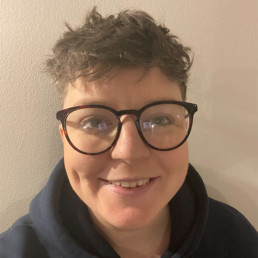
Written by George Hughes
Senior Education, Training and Strategy Officer currently working for EqualiTeach. Having previously worked as an English teacher, George has a passion for writing. They are currently studying an MA in creative writing at Manchester Metropolitan University and hope to one day publish their own children's novel.
With roughly 200,000 – 500,000 trans people living in the UK (Government Equalities Office, 2018), and more celebrities coming out as gender diverse, trans people have become a popular subject for discussion. While many transgender people are celebrated around the world, discrimination and transphobia is still being faced daily with devastating consequences. This blog is about being transgender in the UK, what we mean by transphobia, and what we can do to be inclusive of all members of the community.
First of all, what is meant by the term transgender?
The word transgender is a term which describes people whose gender identity is not aligned with the sex they are assigned at birth.
What is gender identity?
A person’s gender identity is their personal and internal sense of who they are regardless of their hormones, internal and external sex organs, and chromosomes. Gender is no longer regarded as a binary model wherein people have to identify as either man or woman; it is instead a spectrum in which a person is able to freely identify themselves as one of over 60 different gender identities. (Abrams and Ferguson, 2022)
What is transphobia?
In simple terms, transphobia is negative feelings, attitudes or actions against people who identify as transgender. It also covers those who identify as nonbinary, transsexual or androgyne. Transphobia can be seen in many different forms and can range from inappropriate language, prejudice-related bullying, to full-blown violent attacks.
The transgender community have become a topic more frequently discussed by the British tabloids. Panic and prejudice have been propagated by the press and gender critics. Research carried out by Forbes (2021) has claimed that 375 transgender people were murdered in 2021 – twenty five more than the year before. According to records, this is the ‘deadliest year of violence against gender diverse people since records began.’
In August 2020, the Equality and Human Rights Commission published a report which showed the public’s attitudes to trans people. From the data, it is clear that many people do show a positive attitude. When asked to choose words to describe their feelings towards trans people, many chose words such as ‘respect’ and ‘admire’. However, there is still a percentage who selected ‘pity’, ‘fear’, ‘disgust’ and ‘resentment.’
So why is there a growing level of fear-mongering and intolerance?
Shon Faye (2021) states, “By and large, the transgender issue is seen as a ‘toxic debate’, a ‘difficult topic’ chewed over (usually by people who are not trans themselves) on television shows, in newspaper opinion pieces and in university philosophy departments. Actual trans people are rarely to be seen.” As a trans person, it is hurtful to have my existence debated by people without any lived experience. How often do we see ourselves reflected in the media, and not being spoken about by a cisgender person?
As someone who has recently come out as trans, I am getting used to the daily microaggressions and comments about people’s ‘transness’. People have a lot of questions! The most common questions are “When you are having surgery or taking hormones?” as that is what people assume is everyone’s next step. It is not enough that we exist, we have to exist in a way that everyone expects us to.
What is it like being trans in the UK?
While there is lots of support, it is also incredibly difficult. In order to even be diagnosed with ‘gender dysphoria’ (the feeling of discomfort or distress that might occur in people whose gender identity differs from their sex assigned at birth or sex-related physical characteristics) and start medically transitioning, you have to be assessed by two psychologists with expertise in the area of gender development. These can be in excess of £1000 and that is just to get a piece of paper with your ‘diagnosis’ on. If you were to go through the NHS, wait times for the first appointment alone are a minimum of eighteen months – and that is if you are fortunate. Once you have your referral, you are faced with more waiting to see a specialist in that area. Even privately, waiting lists for hormone replacement therapy are a year long. So, while some of us will be going through hormone therapy or surgery, each time we are asked, it reminds us of the long waiting list ahead and the months to follow where we still don’t feel at home in the body we are in.
How can people help?
One way, is to avoid gendered language
Reflect on the language you are using. Using gendered language such as ‘boys and girls,’ ‘lads’ and ‘ladies and gentlemen’ can be alienating for those who identify as gender non-conforming and gender diverse. Being referred to as ‘miss’, ‘ladies’, or ‘madam’ makes me feel uncomfortable every single time.
To avoid this, use vocabulary such as:
- Everyone
- People
- Folks
These terms are more inclusive and do not focus on someone’s gender or gender identity.
Use chosen names and correct pronouns
A person’s chosen name and pronouns are an important part of their identity. If someone has asked you to use these, ensure you are doing so in order to respect the person’s gender identity, and to ensure that they feel included and valued. Chances are, someone has spent a lot of time thinking about their name, so please use it!
If you’re not sure of someone’s pronouns, ask! I have always really appreciated it when someone has asked me what my pronouns are. It immediately puts me at ease. If you are struggling to remember, have a go at saying their names and chosen pronouns aloud.
For example:
Sam is a trans man, he is using he/him pronouns.
Jamie identifies as non-binary. They use they/them pronouns.
What is a deadname?
A deadname is the name transgender people may use to refer to the name they were given at birth. Some people may refer to it as their birth name. You should not ask what their deadname or birth name is, unless it is for legal or financial reasons. If someone wants to share this with you, they will. If you know someone’s birth name, don’t use it. Use the name that the individual asks you to use.
What if I call the person their birth name or use the wrong pronouns?
People make mistakes all the time. It’s okay! If you happen to do this, apologise and move on. If someone corrects you, say ‘thank you’ and move on. It may take a while to remember if you have known the person a while. The most important thing is to show that you are trying.
What if I’m talking about someone before they transitioned?
Always refer to the person using their chosen name and pronouns unless they tell you otherwise. It is respectful to only use what the person is happy with.
And finally, if there is a question that can be answered by Google, search for it!
I started out thinking I had to be everyone’s guidebook to being transgender. I misplaced nosiness for support and said that I was happy to answer any questions at any time. I have since realised that it is not my duty to educate others; that is something that has to come from them. While I am more than happy to have conversations on being transgender, rights, discrimination and equality, I am not here to help people understand what being transgender means. It is tiring.
If I was to use a metaphor to describe being trans, it would be this:
Being trans is like floating around in a rubber ring in the ocean. You can see everyone else on their islands happily being themselves and being free. No matter how hard you paddle, you can’t get there. You’ve never visited and you don’t know how to. People keep telling you to visit, but you still don’t know how. Accepting you are trans allows you to start building a bridge from your rubber ring to the island. With each step you take to becoming yourself, another part of the bridge is added, until it is finally completed. When people call now, you can then cross the bridge and live on that island. It is then that you feel like you’re home.
Special Interests
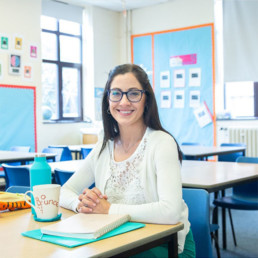
Written by Nadia Hewstone
Nadia is a certified executive school leadership coach. She left headship to start Destino Coaching and now supports school leaders with their own development as well as development of their teams.
Hunter is not Hunter’s real name – he chose it for this blog. It is taken from the Japanese anime series, Hunter X Hunter. The show features the protagonist Gon, on a mission to train himself as a hunter. He reunites with his father, who is alive and an accomplished hunter too. This is one of Hunter’s special interests. He doesn’t just like it, he lives it.
Hunter has been hooked on the Rubik’s cube for years. He spends hours working on improving his solves. His favourite events at cubing competitions are 3×3 blind and 4×4 blind. He talks about algorithms and memorization all the time. It makes no difference to him if you take part in the conversation (which I can’t because I don’t understand it). When he meets someone new he judges their usefulness to him based on how well they can solve a cube. I’m not that useful to him.
He has had many interests over the years. He wore a spiderman costume for over a year once. He taught himself how to play a Japanese flute, learnt how to graffiti and covered our garage. A particular favourite of mine was his interest in detectives. We sourced him a set of detective items from obscure dealers online and he made traps and spied on us for months. He studied Sherlock Holmes and took on many of his traits for a while. When we booked a villa in Mallorca one summer, he spent 10 days inside watching the series starring Benedict Cumberbatch over and over. By the time we flew home he had decided to take up the violin.
These interests envelop him and drive him – they have a mad urgency that is quite exciting but also tiring at times.
He understands now that being in a community of enthusiasts helps him. So we travel all around the country attending Rubik’s cube competitions. These events consist of 2 days of sitting in a hall of 200 hundred (mostly) boys clicking their cubes and discussing the merits of different brands of lubrication. It’s given him so much more joy than we could ever simulate at home. It’s also enabled him to talk about being autistic. In the evenings, in the bar of the hotel, he socialises and it brings me great joy.
Penny is my daughter – the name is taken from Big Bang Theory, her favourite TV show. She watches it on a loop. It’s a comedy but she never laughs at it. She has glasses the same as Penny’s and uses phrases from the series all the time. She wants to be a brain surgeon and study sciences like many of the characters in the series.
Penny’s interests aren’t as clear as Hunter’s. Apparently this is common in girls with autism. She does have things she likes, really likes but doesn’t have hobbies in the same way Hunter does. She worries about her friendships (which are hard work for her). She does like series / TV shows so we have moved through lots of them and on days when she is very low she watches all 8 Harry Potter movies without sleeping. She is very capable and could achieve almost anything. When she takes up a hobby she excels very quickly (football. piano, singing, drama, swimming) but loses interest just a fast. This means her interests don’t show in the same way as Hunter’s do. She does like to talk and talk and talk about the social politics of school, the family, my work etc.
Penny sometimes talks at me all evening and doesn’t let me move. Her favourite criticism of me is ‘I don’t feel like you’re completely present Mum’. What is impressive about her is that when she sets her mind to something she achieves excellent results. If she ever does a manicure for me, for example, it far exceeds the quality of a salon experience. She’s meticulous, a perfectionist, in fact. This is probably why she gives up on things – she sets such high standards for herself that it tires her out.
The Power of the Community
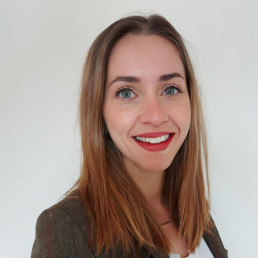
Written by Dena Eden
English teacher and writer based in Norfolk. MA in Educational Research and currently working as an English Standards Leader.
I signed up to the recent #DiverseEd conference knowing I would hear about some brilliant examples of Diversity, Equity and Inclusion work going on across education; I didn’t expect to finish the conference feeling empowered. Listening to authentic voices and lived experiences encouraged me to reflect on my own, and has given me the confidence I needed to forge ahead with necessary change.
As a cis white person I recognise my privilege. As a woman, I have experienced the frustration of my ideas not being taken seriously until a man repeats them. My choice on how to present physically also means people have undermined my intelligence and assume I enjoy shopping and ‘partying’ – they were someone’s actual words. They are surprised when I share my achievements and professional life before teaching. They are even more surprised when they find out I’m gay. Ironically, the part of my identity which is a ‘protected characteristic’ has been met with more positive outcomes than negative. When people ‘find out’ I am gay, women treat me more warmly and men take me more seriously. But that’s a whole other blog post.
I want to share my own experience to try and explain the effect the #DiverseEd conference had on me: despite being invested in creating a truly inclusive environment for a long time, I didn’t feel ‘diverse’ enough to be the person to do that – but at the same time also felt a huge pressure from being part of the LGBTQ+ community to be a voice for those who don’t speak up. Growing up in Birmingham and then living and working in both Mexico and the USA means that I have experience of living life in the role of the ‘other’ – but also that I have always worked in environments rich in diversity. Embarking upon a career in education in a significantly less diverse area of the UK was a shock to me.
Despite absolutely loving where I live and work for lots of reasons, it does continue to surprise me when I witness the problematic attitudes and language used when talking about diversity and inclusion. Discriminatory language is used without understanding why it is a problem and the pervasive idea that ‘real’ prejudice is overt and/or violent means many people do not recognise their privilege: Prejudice hides behind ignorance; tokenism acts as acceptance; tolerance is sufficient.
Understanding inaction: providing solutions not problems.
My experiences have frustrated me and as a result, I approached leadership in the Trust I currently work for to start a conversation; it was met with enthusiasm and support and has led to me setting up an Inclusive Communities group working with outstanding colleagues invested in making long lasting change.
Up until the #DiverseEd conference, I had some idea of what I wanted us to do – but have been apprehensive. For me, a truly inclusive environment has always been about addressing the root of the issue – people’s mindsets. Until people are willing to admit both their own privilege and the importance of the work that needs to be done, nothing will change.
Watching the conference helped me to reflect on previous conversations and helped me to understand that I had been too concerned with losing respect or upsetting others by voicing how crucial the work around diversity, equity and inclusion really is. But without action, we are conversationalists not activists; my thinking has now shifted from worrying about reactions to focusing on my own actions.
Before the conference, I felt like the battle was in trying to get people to appreciate the importance and immediacy of the work that needs to be done – it isn’t work with immediate measurable outcomes for example. After watching the conference, I feel validated in arguing that there should be no such battle. The immediacy and importance of this work is not an opinion – it is a fact.
So moving forward, rather than focusing on whether the changes can be made, I am focusing on how they will be made. Working with an incredible community and calling on the expertise of my colleagues, we are going to approach people with solutions rather than problems. This is where we are going to start:
- Looking at policy within schools and across the whole Trust.
- Educating our staff to be able to challenge one another and our young people – this will be led by training from authentic voices sharing their lived experiences.
- Recognising multiple stakeholders in this work: parents, governors and HR should be included in our approach to EDI.
- Working with our incredible curriculum team to explore ways we can include balanced and meaningful representation into our existing work.
It was overwhelming to think about the work that needed to be done; now I’m excited to get started. We deserve genuine support, not allowances; to be comfortable as well as safe; celebration, not tolerance.

